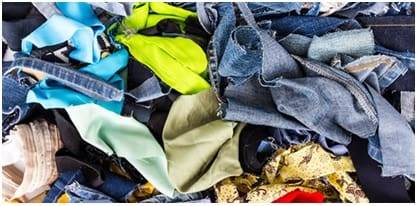What is textile upcycling?
It’s hard for many recycled fabrics to compete with virgin materials.
Commercial textile recycling generally involves breaking down fabrics into a form where they can be spun back out into new yarns.
For natural fibres like cotton and wool, the material is shredded, blended and combed, and then spun into a yarn that can be woven or knitted back into cloth.
But the end result is lower quality than virgin materials because the fibers are shorter and the fabric doesn’t have as fine a texture.
Getting rid of unwanted clothes
The process is different for synthetic fabrics like polyester, which are shredded, then granulated and formed into plastic pellets called nurdles .These pellets undergo a few processes so they can be melted, extruded and spun into a new fiber.
Because recycling natural and synthetic fibres involve different processes, recycling blended fabrics which so many of our clothes are made from. Chemical recycling is done where solvents are used to dissolve the material so the synthetic components can be taken out and recycled, but this has its own challenges as it involves flushing away the natural fibre components.
A CIRCULAR SYSTEM
Textiles made from Recover Yarns can flow through the Upcycled Textile System for many life-cycles. Recover creates long-lasting, high-value products in each successive generation. 
Used clothes and garment production waste is submitted. Old garments and textile waste are deposited at collection bins for re-wear or recycling. Used clothing and textile waste are recovered
Cutting/Shredding and Spinning what was once considered “waste” into valuable new recover yarns. Recover yarns are made Into new fabrics. Recover yarns are knit or woven Into new textiles for virtually every product application imaginable.

New products are made from recover fabrics. Apparel, accessories, home, and industrial products are cut and sewn from textiles made with Recover yarns. Products made with Recover are purchased.
Fashion, accessory, and home goods are bought, used, and eventually worn-out, at which point they are returned to the Recover Upcycled Textile System.

